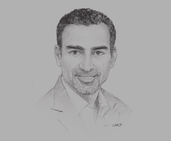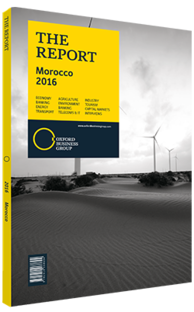Nawfal Bendefa, CEO, Vecteur LV: Interview

Interview: Nawfal Bendefa
How would you describe the commercial real estate landscape in Morocco at present?
NAWFAL BENDEFA: Commercial real estate encompasses a number of asset classes, including offices, retail and industrial. In all these sectors, we have seen a significant amount of new supply coming onto the market, driven primarily by demand. In addition to the increase in demand, the entrance to the market of international corporates, retailers and industrial actors – which tend not to own the real estate they use – has created a need for commercial space for leasing. Shopping centres are the prime example, where franchisees are dependent on the availability of leasable retail space in order for the ability to grow their distribution networks. This is true in other sectors as well, not only in retail. As a result, growing demand for space among international users is driving growth in this segment.
The second driver that will give a boost to the sector is the transformation of the model of the traditional real estate owner. We expect to see more owners and users enter into sale and leaseback agreements, from which we will see a move towards a user-only model. This will allow them to generate liquidity and fuel growth without having to resort to credit or capital increases.
This is obviously healthy for the Moroccan economy in a number of ways, as it allows industrial players to focus on their core competencies and gives rise to professional real estate investors, as is the case in other developed economies.
What sort of impact will real estate investment trusts (REITs) have on commercial real estate, and on the broader economy?
BENDEFA: For the development of commercial real estate, having specialised players makes channelling the money to projects easier and cheaper. It allows users not to strain their own balance sheet and focus on their core business. Users will focus on their growth without being burdened by real estate.
The larger impact question is important to examine in the context of what has been seen in other countries that have adopted REITs. Obviously the main point of reference is the US, where REITs have existed for over 50 years and are an important part of the real estate investment landscape. Not only that, but publicly listed REITs make up a sizeable percentage (around 3%) of total market capitalisation.
The REIT trend has also conquered Europe, and we have seen a significant increase in the number of such vehicles in France, the UK and Germany over the past 15 years. With this growth, we have seen an increase in asset managers’ appetite for this category of investment, especially given its resilience during recent financial market turbulence. What this means is that as long as this category of investment is not available in Morocco, we are not attracting this profile of investor and we are not providing a needed investment product to the market.
But for a developing country the impact goes beyond this. For example, the tax structure for REITs allows them to be very competitive in real estate environments where informal practices are widespread. This is a key consideration in the fight against the informal economy in real estate in Morocco.
Do you envisage further expansion in sub-Saharan Africa if this model is successful?
BENDEFA: Vecteur LV strives to be a commercial real estate investor while retaining a long-term aim to see its offering transformed into a REIT. We believe in this business model and the growth of this segment in Morocco. We feel there is sufficient depth of the market to get to a sizeable and liquid vehicle very quickly. Our focus in the short term is Morocco, but we are open to expanding internationally and will keep watch for opportunities in sub-Saharan Africa.
You have reached the limit of premium articles you can view for free.
Choose from the options below to purchase print or digital editions of our Reports. You can also purchase a website subscription giving you unlimited access to all of our Reports online for 12 months.
If you have already purchased this Report or have a website subscription, please login to continue.

